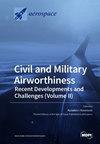Number of Blades’ Influence on the Performance of Rotor with Equal Solidity in Open and Shrouded Configurations: Experimental Analysis
IF 2.1
3区 工程技术
Q2 ENGINEERING, AEROSPACE
引用次数: 0
Abstract
This study explores the implications of the number of blades on the performance of both open and shrouded rotors. By conducting a thorough experimental analysis at a fixed solidity ratio, this research seeks to enhance our understanding of rotor dynamics and efficiency. Two-, three-, four-, and five-bladed rotors were designed and manufactured to have the same solidity ratio. This leads to smaller chord distribution values for higher blade numbers. The experimental analysis aims to quantify the effects of the number of blades and provides a comparative analysis of performance differences between the two rotor configurations (shrouded and open). For the open rotor, results indicate that increasing the number of blades has a minimal impact on overall performance. This is due to the decrease in the tip loss factor being counterbalanced by a decline in efficiency caused by the two-dimensional airfoil performance, which results from a smaller chord and a lower Reynolds number. In contrast, the shrouded rotor exhibits a noticeable performance decay with an increased blade count. Since tip loss is inherently absent in shrouded designs, the decline is primarily attributed to the two-dimensional airfoil performance. This decay occurs while maintaining a constant solidity ratio, highlighting the significant effect of blade count on shrouded rotor efficiency, thereby contributing to the optimization of rotor design in various engineering applications.桨叶数量对开放式和笼罩式等实心转子性能的影响:实验分析
本研究探讨了叶片数量对开放式和带罩转子性能的影响。通过在固定的固体比率下进行全面的实验分析,本研究旨在加深我们对转子动力学和效率的理解。设计和制造的两叶、三叶、四叶和五叶转子具有相同的坚固比。这导致叶片数越多,弦分布值越小。实验分析旨在量化叶片数量的影响,并对两种转子配置(护罩式和开放式)之间的性能差异进行比较分析。对于开放式转子,结果表明增加叶片数量对整体性能的影响很小。这是由于叶尖损失因数的减少被二维机翼性能造成的效率下降所抵消,二维机翼性能是由较小的弦长和较低的雷诺数造成的。与此相反,随着叶片数量的增加,护罩式转子表现出明显的性能衰减。由于护罩式设计本身不存在叶尖损失,因此性能下降主要归因于二维机翼性能。这种衰减是在保持固体比不变的情况下发生的,凸显了叶片数对护罩式转子效率的显著影响,从而有助于优化各种工程应用中的转子设计。
本文章由计算机程序翻译,如有差异,请以英文原文为准。
求助全文
约1分钟内获得全文
求助全文
来源期刊

Aerospace
ENGINEERING, AEROSPACE-
CiteScore
3.40
自引率
23.10%
发文量
661
审稿时长
6 weeks
期刊介绍:
Aerospace is a multidisciplinary science inviting submissions on, but not limited to, the following subject areas: aerodynamics computational fluid dynamics fluid-structure interaction flight mechanics plasmas research instrumentation test facilities environment material science structural analysis thermophysics and heat transfer thermal-structure interaction aeroacoustics optics electromagnetism and radar propulsion power generation and conversion fuels and propellants combustion multidisciplinary design optimization software engineering data analysis signal and image processing artificial intelligence aerospace vehicles'' operation, control and maintenance risk and reliability human factors human-automation interaction airline operations and management air traffic management airport design meteorology space exploration multi-physics interaction.
 求助内容:
求助内容: 应助结果提醒方式:
应助结果提醒方式:


